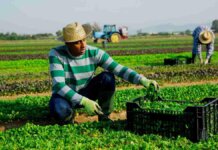This Content is for Subscribers Only
Minister of Agriculture John Steenhuisen has authorised the inclusion of indigenous crops and medicinal plants under the Marketing of Agricultural Products Act, formally bringing them into South Africa’s agricultural economy. The move, approved on 21 July 2025, is projected to unlock an estimated R12 billion per year and empower traditional farmers and herbalists who have long worked outside the formal economy.
What Happened
The declaration follows a request from industry stakeholders who argued that traditional crops and herbal plants contribute significantly to local livelihoods and deserve formal recognition. The National Agricultural Marketing Council (NAMC) estimates that the indigenous and medicinal plant sector is worth R12 billion annually, representing nearly 3% of South Africa’s total agricultural output.
Minister Steenhuisen said this change gives long-overdue dignity to traditional producers:
“For too long, our people who harvest and trade traditional medicines and indigenous crops have been operating in the economic shadows. With this legislative change, we are granting recognition and a path to prosperity.”
He also stated that the Department is determined to modernise its regulatory framework to encourage innovation and sustainable growth across the agricultural industry.
“Outdated legislation is an obstacle to new technologies and practices that improve yield, health, and profitability,” he added.
Official Response
The new inclusion means these crops and plants are now governed under the Marketing of Agricultural Products Act, 1996 (Act No. 47 of 1996), enabling producers to benefit from structured market access, funding opportunities, and improved regulation.
The Act allows representative bodies to apply for statutory measures such as levies and registration, which will enable producers to fund development programmes and support job creation in rural areas.
Economic Impact
The trade in traditional medicinal plants alone is estimated at R3 billion per year, while indigenous crops contribute around R9 billion together forming part of the informal sector that previously went unaccounted for in GDP calculations.
These products include staples such as millet, Bambara groundnut, marula, amadumbe, and medicinal plants like Buchu, Sutherlandia, Devil’s Claw, and African Wormwood.
South Africa is home to one of the richest selections of indigenous flora, many of which are used for food, health, and cosmetic purposes.
Community Impact
Experts believe that formalising the sector could significantly boost rural employment and entrepreneurship. Indigenous knowledge holders, often women and small-scale farmers, will now have a greater stake in formal agricultural value chains.
“This declaration opens the door for small growers to benefit from structured markets while preserving our natural and cultural heritage,” said an agricultural economist at the NAMC.
The recognition also positions South Africa as a global supplier of natural and herbal products, aligning with growing international demand for plant-based remedies and sustainable crops.
Key Takeaways
- Indigenous crops and medicinal plants now recognised under South Africa’s agricultural law.
- The sector is valued at R12 billion annually, with strong export potential.
- Minister Steenhuisen says this reform restores dignity and opportunity to rural producers.






